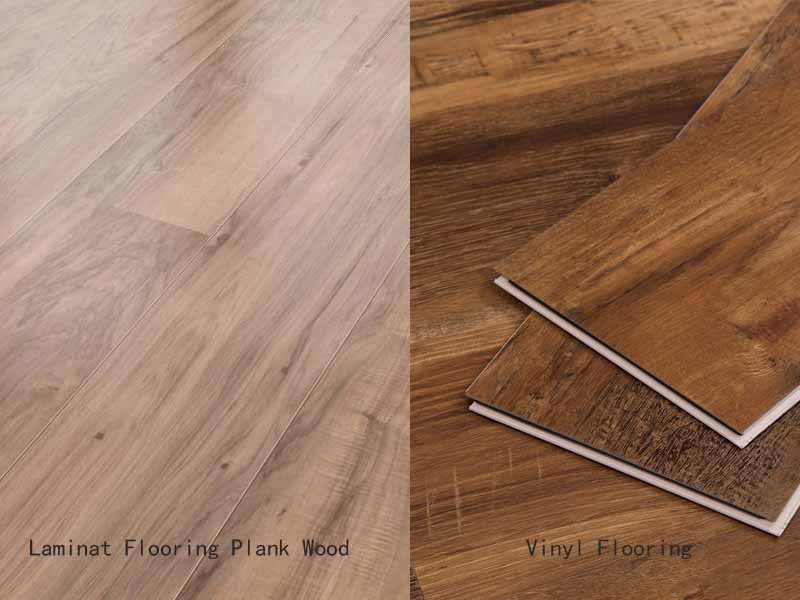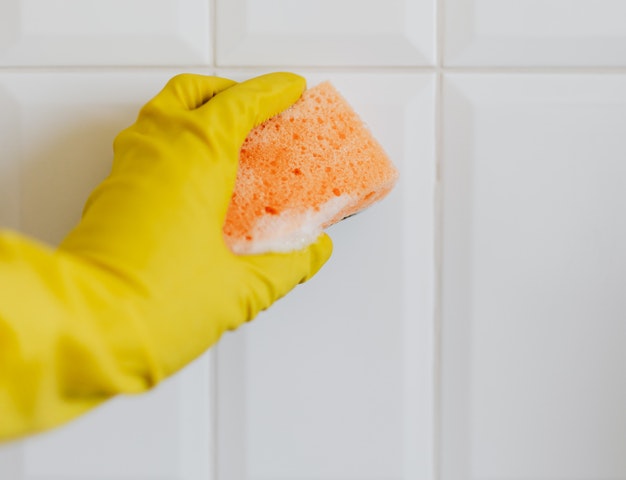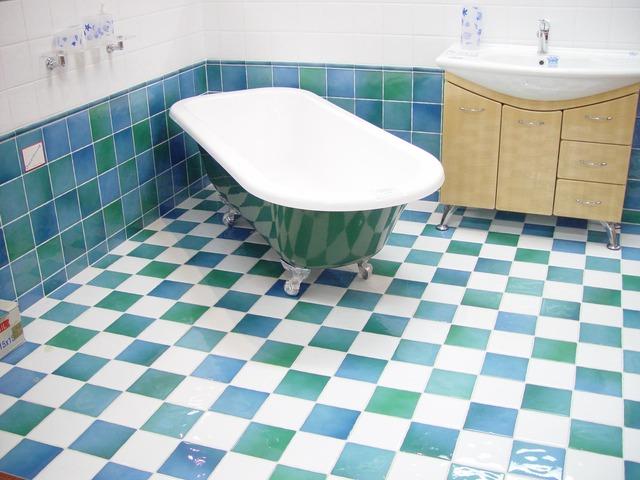
Are you looking at replacing your old floor, or are you looking for an affordable, durable, and customizable floor for your home?
A laminate floor or a vinyl floor will guarantee you all of the above and more.
This article will answer all your questions about laminate and vinyl flooring. In addition, it will intimate you on which is the better flooring. We want to gently hold your hands as you take this important decision to have a comfortable home that makes you happy.
For a better understanding, let's go over what these floorings are.
What are Laminate Flooring and Vinyl Flooring?
Laminate and vinyl flooring are cheaper alternatives to hardwood floors as they are man-made. Laminate flooring has three layers: an inner core board, a decorative photo image layer, and an overlay or wear layer that protects the floor.
Vinyl flooring has a solid vinyl core, a printed vinyl layer, and an overlay that can be made to not only look like hardwoods but also ceramics and stones.
The difference between both? They are made of different synthetic materials.
Below, the two floorings are compared on different bases to help you make a clearer, smoother, and faster decision.
Laminate Vs Vinyl Flooring
Durability and Maintenance
Next to the bed is the floor – in terms of frequency of use and hours spent on it. For this reason, you will want durable flooring that offers ease of maintenance.
Laminate flooring combines both qualities perfectly but with the downside of being irreparable when the outer layer is scratched or exposed to water for a long time. In contrast, vinyl flooring may only delaminate (wear out) if it's of the lowest quality.
Generally, vinyl flooring withstands high traffic than laminate flooring. It also requires low maintenance compared to laminate flooring. You are, however, advised to change the positioning of your furniture at intervals to avoid dents on your vinyl floor.
Care and Cleaning
For both, simple vacuuming, sweeping, or mopping is enough because they are easy to clean and care for. Laminate flooring isn't suited for wet cleaning. Preferably, use a dry mop or a soft microfiber cloth to clean the floor or damp mop (almost dry) if you feel the need to use water for cleaning because laminate has limited moisture resistance.
Unlike laminate, vinyl flooring can be wet-cleaned or scrubbed with cleaning agents. It allows for sweeping with brooms and wet mopping.
Cost
Are you on a budget but have an urgent need to change flooring?
Then, laminate flooring is a more viable option for a fresh look with less money. It costs between $1 and $5 per square foot of 7mm and 12mm thickness, respectively.
The downside of choosing this flooring is that it will require a replacement sooner than you might be prepared for. So, do save up for that if you will be considering it.
Vinyl flooring, on the other hand, costs as much as laminate flooring except for the premium brands of vinyl floors.
In all, both have similar costs and are less expensive than hardwoods and porcelain tiles.
Water Resistance
As stated above, laminate flooring is not water-resistant because it contains a fiberboard core layer made of wood products. This will absorb water, then become soft and swollen, and will not return to its original size when dry.
This absorbed water can peel off the design layers leading to total removal of the flooring and replacement with a new one. It's irreparable. Although, its water tolerance can be improved by proper installation with tight seams and good moldings. It only lasts for a short time, just a bit longer than when not properly installed.
Only the older models of vinyl flooring may have water intolerance problems since they were made with fabric or felt backing. But the recent flooring is 100% waterproof, made with polymer materials. Vinyl floors can be soaked in water for an extended period without losing their shape or dimension and reused.
The vinyl sheet typically comes in wide rolls requiring no seam that will permeate water. If you ever have a water intolerance problem with a vinyl floor, it is due to improper installation.
Appearance and Design

Image credit: marketresearch.biz
Laminate flooring has been on the second option column since the beginning of this article. But for now, it is taking the spotlight, hopefully for other qualities too.
Laminate flooring has a higher quality than vinyl in terms of design, appearance, and overall flooring styles. It has more realistic embossing that gives off almost the same feel like hardwood.
This feature is attributed to the source materials being byproducts of woods sealed with resin. It permits realistic 3-D embossing with actual images of the desired materials.
The vinyl floor can only attain this level of quality (looking like real hardwood) when it's a thicker core vinyl floor that is embossed. If you want a vinyl floor for your home, here's a piece of good news in regards to appearance and design, new versions of luxury vinyl are made to look like wood and with a deeper embossing.
Heat Resistance
Well, well, well! Guess who's in the good book again? Laminate flooring!
Since they are made of byproducts of woods, they fare better when exposed to direct sunlight than their vinyl counterpart. As a result, laminate flooring color doesn't deteriorate under sunlight, but vinyl floors do. This disadvantage explains why it's advised not to use vinyl flooring for outdoor activities or purposes.
Stain Resistance
Both laminate flooring and vinyl flooring are made with outer layer surfaces that resist stains or dirt accumulation.
Installation
You can install laminate and vinyl floorings with the same click-and-lock method. Here, the tongue of the plank is fitted into an adjoining plank and is locked together.

Except you are installing a sheet vinyl or want a foam underlayment for the floor, which requires a professional, every other thing can be done by you. Both floors are easy to install.
Laminate floors are, most times, installed over existing floors; these are called "floating floors."
Environmental Impact
If you’re weighing on the option that has zero impact on the environment or is 100% recyclable, the answer is none. But if you’re looking for the one with a lesser impact or with high recyclable materials, the answer is the laminate floor.
Laminate floors are made of biodegradable byproducts of wood, but the plastic surface of the floor and resin are non-biodegradable.
Vinyl flooring is made of synthetic materials that emit toxic chemicals, do not decompose, and can't be recycled. This feature is a major drawback if eco-friendliness is of paramount importance to you.
Comfort
One major benefit of having a laminate floor in your home is comfort. It's quite comfortable for your underfoot. Sometimes, buyers overlook the quality, but it's crucial as it will determine how often you walk around the house.
Also, laminate floors have thicker materials, creating a warm and soft feeling to your foot.
Vinyl floors are usually cold and hard on the foot. Therefore, they are not recommended in living rooms and bedrooms.
Lifespan and Longevity
The longevity of both floors depends largely on care and maintenance by the owner. When laminate floors are kept from water or waterlogged, they last as much as the vinyl floor (up to 20-25years). For a long-lasting laminate floor, keep water and scratches away.
The vinyl floor might cost more, but it lasts longer, especially when you’re confident that you can adhere to the rules for the long-lasting laminate floor.
Resale Value
Both floors have a good resale value as long as they are been taken care of and neatly maintained. For example, an inferior vinyl floor or a damaged laminate floor might discourage a buyer because it would be seen as a project-in-waiting. On the other hand, if laminate flooring is relatively new, it will command a higher resale value than a vinyl floor.
Best Flooring by Room
The best flooring for each room depends on several factors such as the room's function, frequency of movement in the room, and activities being carried out in the room.
Vinyl floors are best suited for rooms with higher moisture and water usages such as the kitchen, bathroom, and laundry room. Although, you can use them for other parts of the home.
Laminate flooring will be a better option for the bedroom, living room, dining room, and home office.
Final Verdict

Image credit: accessfloorstore.com
In conclusion, it is difficult to give a specific answer to the question of "which is better?". This is because it's not a "one answer fit all" situation. It largely depends on who you are, what you want, and what you want your home to represent.
Deciding on why you want a new floor will go a long way to streamline your options and invariably your final decision. We've provided this detailed guide to help you weigh your options and make a calculated decision.
Rather than throwing either of these away abruptly, you can consider weighing different brands and products offered instead. We hope you enjoy reading this article as much as we enjoyed putting it together for you.







2 comments
Amelia Adams
Well, this is an awesome post and written very well. Your point of view is very good. wood floor repair NYC</>
Amelia Adams
Thanks for sharing such useful information. I think this is really a very nice post. Thanks for the great content! wood floor staining</>
Leave a comment
This site is protected by hCaptcha and the hCaptcha Privacy Policy and Terms of Service apply.